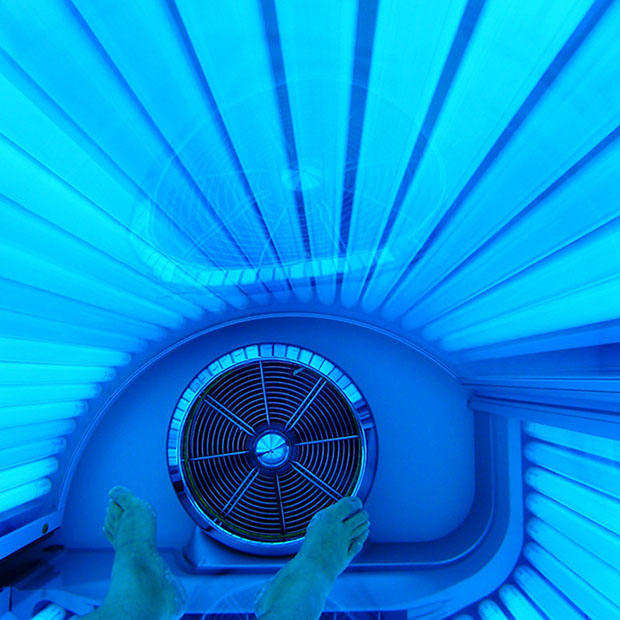Tanning Beds and Eye Safety

You might have heard that indoor tanning is a safe alternative to sunbathing, but that is false.
A group of eye doctors, surgeons, dermatologists, and other physicians actually spoke to Congress in a briefing about the negative health effects of indoor tanning. The World Health Organization warns that indoor tanning brings a high risk of skin cancer. So what, specifically, is the risk to eye health with indoor tanning?
Eyes and High Levels of UV Exposure
The harm to our cells from UV radiation is cumulative over the course of our entire lives. It might not seem too bad in the moment, but the damage builds up over time the more we are exposed to it. What makes tanning beds especially dangerous is that they can expose us to 100 times the amount of UV light that we would get by being outside on a sunny day. It’s not just bad for our skin; it can do serious damage to the eyes and eyelids.
But Can’t I Just Close My Eyes While I Tan?
Unfortunately, even closing our eyes during a tanning session isn’t enough to protect them from UV rays that strong. Some of the eye problems linked to indoor tanning are macular degeneration, cataracts, sunburn, blurry vision, and dry eye.
Sight-threatening conditions like macular degeneration and cataracts are usually associated with old age, but indoor tanning can speed up the process considerably. Macular degeneration is the deterioration of the detailed central vision and cataracts are the clouding of the lens in the eye as the proteins in it clump together, making it harder to distinguish colors or see clearly.
Even the temporary effects of indoor tanning aren’t fun. Our skin isn’t the only part of us that can sunburn. Photokeratitis is the fancy name for a sunburned cornea, which has symptoms like burning, redness, a gritty feeling beneath the eyelids, and runniness. Dry eye can also leave the eyes irritated and red, and the insufficient tear production leaves the eyes vulnerable to infection.
Eye Health Matters More Than a Tan
No matter how popular it is to have bronze skin, if it comes at the expense of UV damage, it’s not worth it. Obviously, an optometric practice like ours doesn’t have the power to ban indoor tanning (or sunbathing, for that matter), but we do strongly urge our patients to make the health of their eyes and skin a priority over fleeting beauty standards. At the very least, wear protective goggles to tan.
